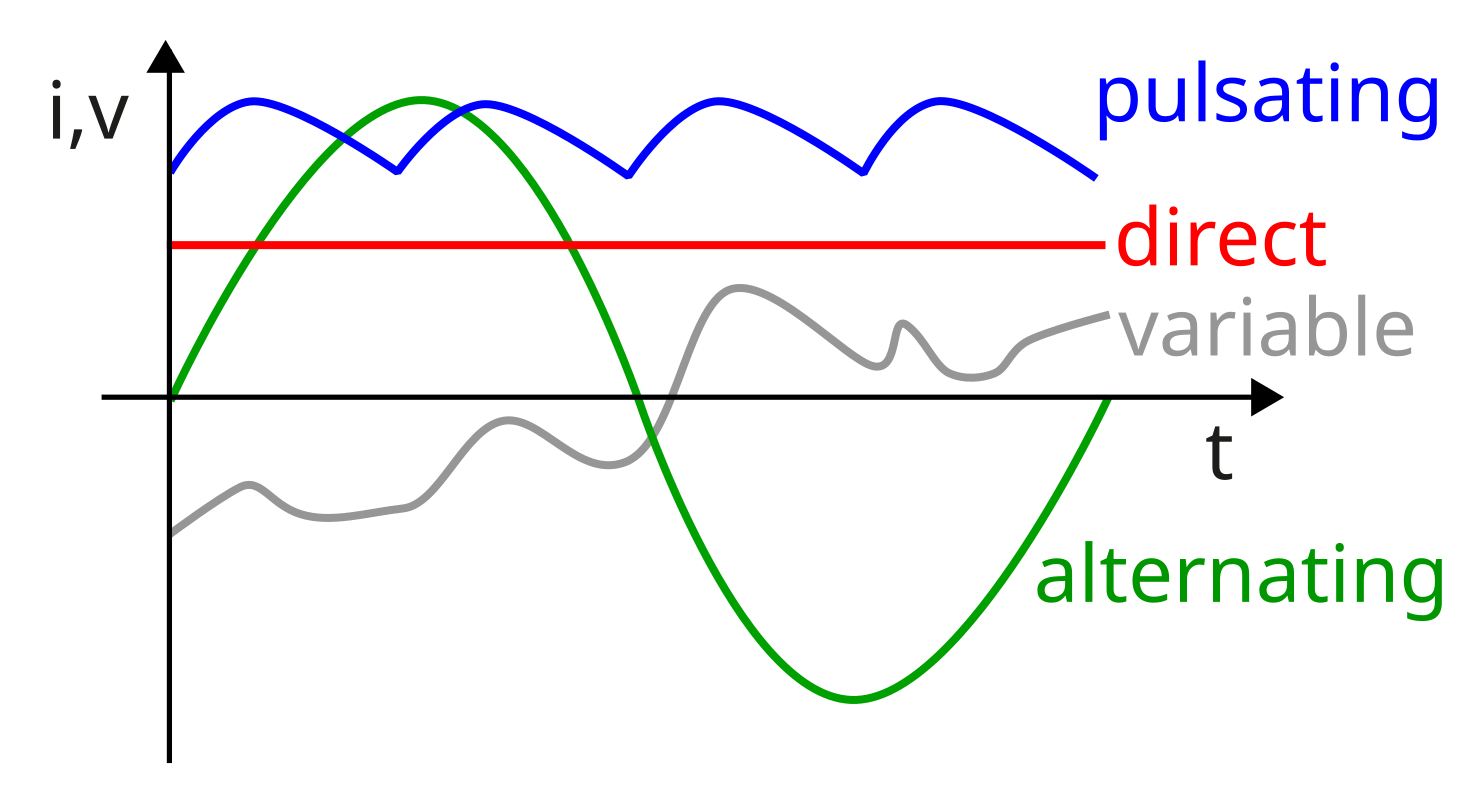Reactance
The reactance \((X)\) of a circuit is the apparent resistance contributed to a circuit by the capacitor and inductor. Both capacitors and inductors are in truth resistance-less, so they do not directly resist the current, but their interactions with the resistor and voltage source can be modeled in dimensionally equivalent terms.
The voltage of the capacitor or inductor can be expressed in terms of the reactance and the current according to ohm's law.
\[\large V=IX\]
Together with the resistance, the reactance of a circuit create the impedance by way of analysis of the phasors of the circuit. Without reactance, it is impossible to study alternating current circuits directly.
 Any circuit that is not direct with have non-zero reactance.
Any circuit that is not direct with have non-zero reactance.
Capacitative reactance
The capacitance reactance can be remembered to be an inversely related to the capacitance because the voltage is also inversely related to the capacitance according to \(V = \frac{q}{C}.\) As the capacitance increases, the reactance of the capacitor decreases, because the voltage has a harder time building up in the capacitor. Similarly, as the driving frequency increase, the capacitative reactance decreases, because the short periods again allow for less build up in the capacitor.
\[X_C = \frac{1}{\omega C}\]
\[ \begin{align} V_C(t) &= \frac1C \int I(t) dt \\ &= \frac1C \big(\frac{I}{\omega} \sin(\omega t) \big) \\ &= \frac{I}{\omega C} \cos \big(\omega t + \frac{\pi}{2} \big) \\ &= I X_C \cos \big(\omega t + \frac{\pi}{2} \big) \\ \end{align} \]
Find the RMS current through a \(C = 200 \mu\text{C}\) capacitor attached to an \(\omega = 500 \frac{\text{rad} }{\text{s} }\) AC source rated at \(20 \text{ V}.\)
(1) Calculate reactance.
\[ \begin{align} X_C &= \frac{1}{\omega C} \\ &= \frac{1}{(500 \frac{\text{rad} }{\text{s} }) (200 \mu\text{C})} \\ &= 10 \Omega \end{align} \]
(2) Ohm's Law
\[ V = IX_C\]
\[ \begin{align} \rightarrow I &= \frac{V}{X_C} \\ &= \frac{20}{10} \\ &= 2 \text{ A} \end{align} \]
A \( 200 \mu\text{F}\) capacitor is attached to \(10 \text{ V}\) AC source. What is the RMS current at a frequency of \(\dfrac{500}{\pi} \text{ Hz}?\)
Inductive reactance
The inductive reactance can be remembered as being directly related to the inductance because the voltage of the inductor is likewise directly related to the inductance according to \(V = L \frac{di}{dt}.\) As the inductance in increases, the inductive reactance actually increases because the inductor uses up more voltage for the same change in the current. Likewise, an increase in the driving frequency increases the inductive reactance because the current changes more rapidly through the inductor.
\[X_L = \omega L\]
\[ \begin{align} V_L(t) &= L \frac{dI}{dt} \\ &= L \big(-\omega I \sin(\omega t) \big) \\ &= I \omega L \cos \big(\omega t - \frac{\pi}{2} \big) \\ &= I X_L \cos \big(\omega t - \frac{\pi}{2} \big) \end{align}\]
Find the RMS current through an \(L = 5 \text{ mH}\) inductor attached to an \(\omega = 1000 \frac{\text{rad} }{\text{s} }\) AC source rated at \(200 \text{ V}.\)
(1) Calculate reactance.
\[ \begin{align} X_L &= \omega L \\ &= (1000 \frac{\text{rad} }{\text{s} }) (5 \text{ mH}) \\ &= 5 \Omega \end{align} \]
(2) Ohm's Law
\[ V = IX_L\]
\[ \begin{align} \rightarrow I &= \frac{V}{X_L} \\ &= \frac{200}{5} \\ &= 40 \text{ A} \end{align} \]
What driving frequency is required for a \(L=2\text{ H}\) inductor to pull 2 A of current from an \(\varepsilon = 220 \text{ V}\) AC source?